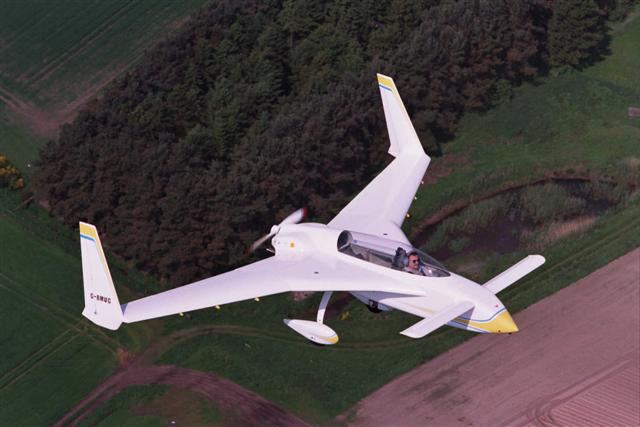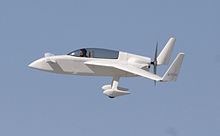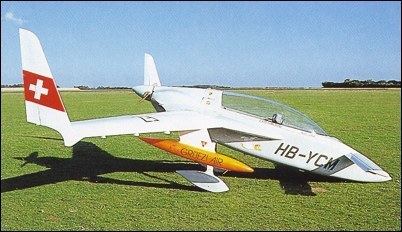Top speed 314 km/h Range 1,368 km Length 4.32 m | Cruise speed 266 km/h Wingspan 6.77 m Weight 263 kg | |
 | ||
Burt rutan varieze aircraft for diy amateur built 1976
The Rutan VariEze is a composite, canard aircraft designed by Burt Rutan. It is a high-performance homebuilt aircraft, hundreds of which have been constructed. The design later evolved into the Long-EZ and other, larger cabin canard aircraft. The Varieze is notable for popularizing the canard configuration and moldless composite construction for homebuilt aircraft.
Contents

Overview

Work on the VariEze design, which grew out of Rutan's experience designing and building the VariViggen, began in 1974. The first prototype, designated Model 31 and registered N7EZ, first flew on May 21, 1975 after four months of construction. This aircraft used a Volkswagen engine conversion. Three months later it was shown at Oshkosh where Dick Rutan piloted it to an under 500 kg class distance record of 1,638 miles (2,636 km). Rutan believed that by engaging in a program of breaking class records he could further fine-tune the design.

The aircraft was so popular at Oshkosh that Rutan redesigned the aircraft so that it could be sold as a set of plans. A second prototype, the Model 33, N4EZ, built using a larger wing, a Continental O-200 engine, and many other detail changes, was shown at Oshkosh in July 1976 and plans were offered for sale. Approximately 2000 aircraft were under construction by 1980, with about 300 flying by late 1980. Ultimately more VariEzes and Long-EZs (a derivative, slightly larger design) were constructed than any other homebuilt type of the time. The sale of plans ceased in 1985.

Rutan's stated goals for the design included reduced susceptibility to departure/spin and efficient long range cruise; these goals were achieved. The use of a canard configuration allowed a stall-resistant design, at the price of somewhat increased takeoff and landing speeds and distances relative to a similar conventional design with effective flaps. The holder of the CAFE Challenge aircraft efficiency prize briefly was Gary Hertzler, set using a VariEze.

The prototypes flew originally with elevons on the canard for both pitch and roll control but the design was changed to pitch control with the canard elevators and roll control with mid span wing ailerons after a few aircraft were built.
While the airplane was resistant to pitch departures, a few builders discovered a potential for a novel lateral departure mode resulting from one winglet stalling at large sideslip angles. An outer wing leading edge droop (and later vortilons on some examples) was added to alleviate this problem and rudder travel was reduced.

The design's stall resistance did not appear to translate to a lower accident rate than for other homebuilts; a review of the NTSB database from 1976 to 2005 shows 130 total accidents and 46 fatal accidents out of a fleet of about 800 (691 registered in 2005). Precise comparisons are difficult, however, because of the haphazard nature of data collection and analysis for accidents involving homebuilt airplanes.
The VariEze is subject to a 2.5g positive, 1.5g negative, maximum load factor limit applied after the discovery of problems with some VariEze wings.
In place of a parking brake, the plane's nosewheel retracts until the nose rests on the ground. Resting the nose on the ground also moves the plane's center of gravity forward relative to the main landing gear, which prevents the plane from tipping onto its rear when there is nobody in the pilot's seat to weigh the nose down.
Specifications
Data from Jane's All The World's Aircraft 1982–83
General characteristics
Performance
